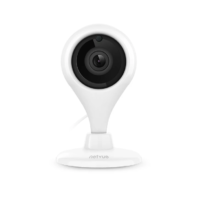Important Facts You Should Know on How a Camera Records and Stores Footage
alicesmith October 9, 2021We’ve all been there: we’re watching an online video, movie, or sporting event when the screen abruptly freezes or the video drops to poor quality. This sudden reduction in quality, regardless of what you’re watching, is really aggravating, right?
But, do you have any experience with video surveillance or IP cameras? You might hear about H.264 and H.265 if you’re interested in micro SD cards. These two notions are not identical, although they are both video coding standards.
Two crucial elements to consider when purchasing a surveillance camera are how the camera records and saves information. Continuous video recording necessitates the use of a large-capacity storage device, such as a micro SD card for security cameras. The frequency of recording and the manner in which the film is recorded affect the amount of security footage. The following are some key facts concerning several types of recording and SD cards.

H264 vs. H265 for video recording
H.265 and its forerunner, H.264, are industry standards for recording, compressing, and sharing digital video data. H.264, often known as AVC (Advanced Video Coding), is a video compression standard that was created to make it easier to record and send high-quality motion video over a little amount of bandwidth.
H.265 is similar to H.264, but the former has a more advanced capability for compressing video material, resulting in a video file that takes up less space. H.265 (High-Efficiency Video Coding), also known as HEVC (High-Efficiency Video Coding), can record and compress files twice as effectively as H.264.
H264 vs. H265: What You Should Know

• H.265 is more powerful than H.264 since it can encode video footage twice as quickly.
• Video files recorded using H.265 take up less space than those compressed with H.264.
• H.265 cameras are less expensive to maintain than H.264 cameras since they require less bandwidth.
Choosing a micro SD card for a security camera’s footage storage
Micro SD card for security cameras is used to store video footage. The amount of SD cards you need depends on how often and for how long you’ll be capturing video footage, as well as the format in which you’ll be recording and compressing it.
A micro SD card with a storage capacity of 128 GB can often hold the continuous film for 15 to 30 days. However, as previously said, storage will vary based on the video recording and compression standard employed.
Here are some other things to think about when choosing a micro SD card for security camera:
• In comparison to someone who utilizes H.265, if your camera uses H.264, you’ll need a larger SD card to hold the same amount of film.
• Make sure your micro SD card is compatible with your smartphone or PC. You would not want to buy a micro SD card only to realize it doesn’t work on your smartphone or PC. Always ask before you make a purchase.
• Your micro SD card selection should be based on your recording needs.
• Choose SD cards that can survive a variety of weather conditions, stress, and X-ray radiation.



